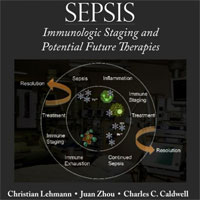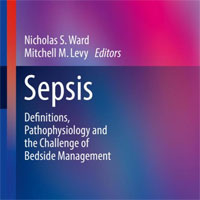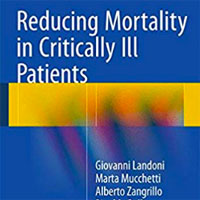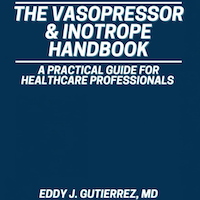Tag: treatment
Exosomes in Critical Illness
Exosomes are small, cell-released vesicles (40–100 nm in size) with the potential to transfer proteins, lipids, small RNAs, messenger RNAs, or DNA between cells via interstitial fluids. Due to their role in tissue homeostasis,... read more
Early EEG for outcome prediction of postanoxic coma
We recently showed that electroencephalography (EEG) patterns within the first 24 hours robustly contribute to multimodal prediction of poor or good neurological outcome of comatose patients after cardiac arrest. Here, we... read more
Clinical Practice Parameters for Hemodynamic Support of Pediatric and Neonatal Septic Shock
The American College of Critical Care Medicine provided 2002 and 2007 guidelines for hemodynamic support of newborn and pediatric septic shock. Provide the 2014 update of the 2007 American College of Critical Care Medicine... read more
Neuro ICU Early Mobilization Protocol
Researchers in the U.S. have developed a multidisciplinary Neuro Early Mobilization Protocol for complex patients in the neuroscience intensive care unit (NSICU). Developing an evidence-based protocol with inter-professional... read more
Buprenorphine for the Treatment of the Neonatal Abstinence Syndrome
Current pharmacologic treatment of the neonatal abstinence syndrome with morphine is associated with a lengthy duration of therapy and hospitalization. Buprenorphine may be more effective than morphine for this indication.... read more
A Breakthrough Oxygen Therapy May Be Able to Reverse Brain Damage
New research shows that low oxygen therapy is able to eliminate brain lesions developed from mitochondrial dysfunction in mice. Eventually, hypoxia therapy could be used to treat people with similar disorders and maybe even... read more
Why digital disruption is only starting in healthcare
Disruption often is viewed as a positive noun in the business world. Particularly in healthcare, such disruption can result in increased understanding and enhanced outcomes, among other benefits. Healthcare has clearly... read more
Happy 100th Anniversary to the RSNA
This week the Radiological Society of North America, a.k.a. RSNA, is holding its annual meeting in Chicago. RSNA is an international society of radiologists, medical physicists and other medical professionals with more than... read more
Effect of Reminder Devices on Medication Adherence
In this randomized clinical trial of 53 480 enrollees of a pharmacy benefit manager, no statistically significant difference in adherence was found between those in the control group and those who received a reminder device... read more
Strategies for Optimizing Diagnostic Predictive Value of Clostridium difficile
Because nucleic acid amplification tests (NAATs) do not distinguish Clostridium difficile infection (CDI) and asymptomatic C. difficile carriage, the diagnostic predictive value of NAATs is limited when used in patients with... read more
Viral coinfection is shaped by host ecology and virus-virus interactions across diverse microbial taxa and environments
Infection of more than one virus in a host, coinfection, is common across taxa and environments. Viral coinfection can enable genetic exchange, alter the dynamics of infections, and change the course of viral evolution. Yet,... read more
Serial Procalcitonin Predicts Mortality in Severe Sepsis Patients
Objectives: To prospectively validate that the inability to decrease procalcitonin levels by more than 80% between baseline and day 4 is associated with increased 28-day all-cause mortality in a large sepsis patient population... read more
Manual vs. Integrated Automatic Load-distributing Band CPR with Equal Survival after out of Hospital Cardiac Arrest
Between March 5, 2009 and January 11, 2011 a randomized, unblinded, controlled group sequential trial of adult out-of-hospital cardiac arrests of presumed cardiac origin was conducted at three US and two European sites. After... read more
Big Data Detects Sepsis In Major Hospitals
Data analytics have found that large medical facilities have higher rates of death from sepsis than their smaller hospital counterparts. Researchers from Houston Methodist Hospital recently used Big Data analytics to learn... read more
Hemodialysis and Survival in Intubated Salicylate-Poisoned Patients
Salicylate-poisoned patients can be incredibly complex and severely ill. Secondary to the significant acid-base abnormalities that can accompany salicylate poisoning, hemodialysis (HD) is sometimes required to facilitate... read more
Post Intubation Hypotension: The AH SHITE mnemonic
Here is a crowd sourced approach that will allow most etiologies of post intubation hypotension to be identified: The AH SHITE mnemonic is something that you can quickly run through en route to the patient’s room, or at... read more
Clinical summaries for hospitalised patients: time for higher standards
The average person remembers less than half of the information provided by healthcare professionals during a medical visit. The situation is arguably most challenging for patients leaving the hospital, where acute illness,... read more
Antipyretic Therapy in Critically Ill Septic Patients
This meta-analysis aimed to examine the impact of antipyretic therapy on mortality in critically ill septic adults. Inclusion criteria were observational or randomized studies of septic patients, evaluation of antipyretic... read more
Changing Mindsets to Enhance Treatment Effectiveness
This Viewpoint defines mindsets - frames of mind that orient beliefs or expectations - discusses how they can influence patients' perceptions about treatment and self-efficacy, and proposes ways physicians might shape... read more
Lung Microbiome: Key to Respiratory Ills?
Recently, JAMA discussed this research and its potential clinical applications with 2 experts on the front lines, Jack Gilbert, PhD, a microbial ecologist at the University of Chicago and director of its new Microbiome Center... read more
Pricey Technology Is Keeping People Alive Who Don’t Want to Live
As an ICU physician, I’ve used technologies like breathing machines and feeding tubes to save lives that would have been lost just a few decades earlier. But I’ve also seen the substantial costs, both human and financial,... read more
Early, Goal-Directed Therapy for Septic Shock
After a single-center trial and observational studies suggesting that early, goal-directed therapy (EGDT) reduced mortality from septic shock, three multicenter trials (ProCESS, ARISE, and ProMISe) showed no benefit. This... read more









